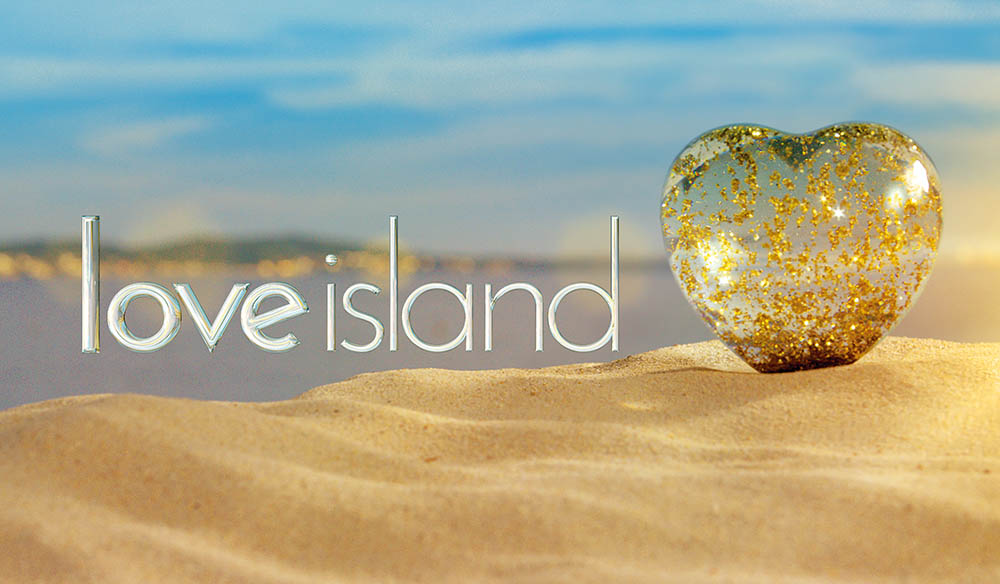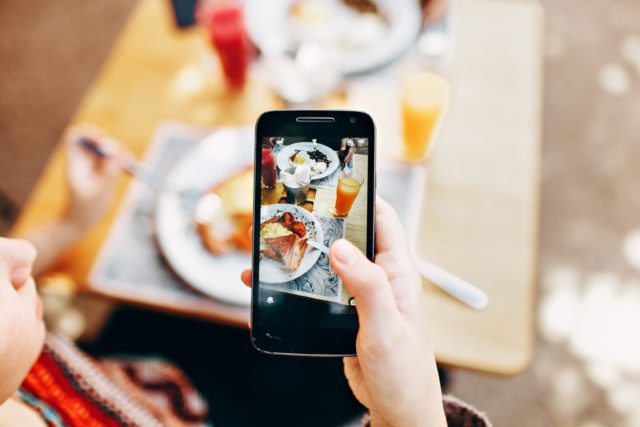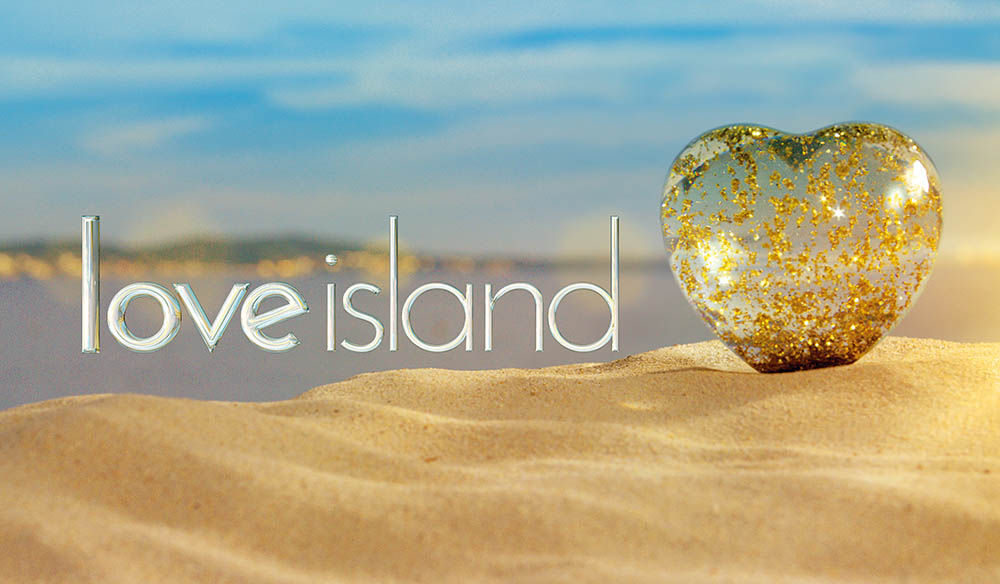
Whether you’re a fan or not, Love Island has become TV’s hit of the summer – dominating conversations on social media practically made the show inescapable to anyone with a mobile device.
Racking up 3.4 million viewers on season 4’s first episode, the show has officially been crowned ITV2’s most-watched programme in history.
Here we look at social media marketing tactics Love Island is using to shape digital-first TV:
A multi-channel, audience-first strategy
If you had to pinpoint one marketing tactic that powered Love Island’s online success, it would be how well ITV nailed their content strategy around one thing: its audience.
With viewers willing to sacrifice their daily 9 pm plans to keep up to date with the latest couples and drama, the show has successfully capitalised on generating a sense of excitement amongst an audience desperate to stay engaged.
To gain a better understanding of Love Island’s target audience profile, I collated and analysed over 250,000 online mentions (news, social media, blogs, videos, etc) over the course of a week leading up to and after this year’s Season 4 final. Here’s what I learnt:
1. 81% of mentions are on Twitter, followed by news websites at 11% and Facebook at 3%.

Arguably, without Twitter, Love Island wouldn’t be the show it is today.
The use of hashtags, synonymous with the social platform, is seen throughout the shows daily text messages and games played by the contestants such as ‘twitter bingo’.
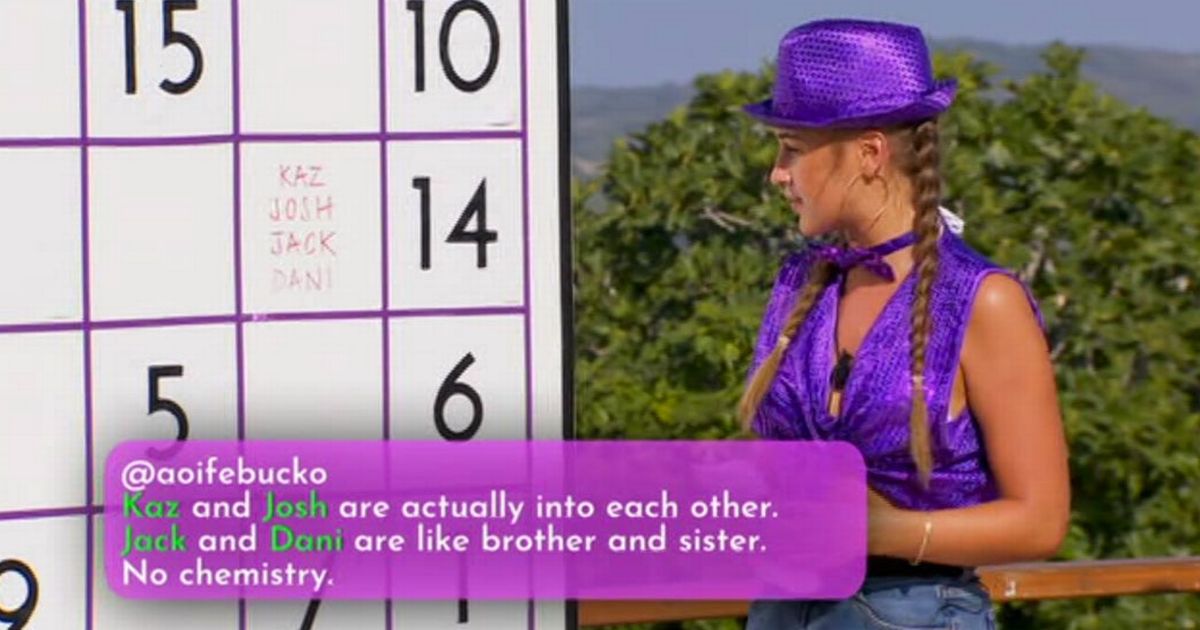
2. 26% of mentions included @loveisland’s handle and/or #loveisland’s hashtag
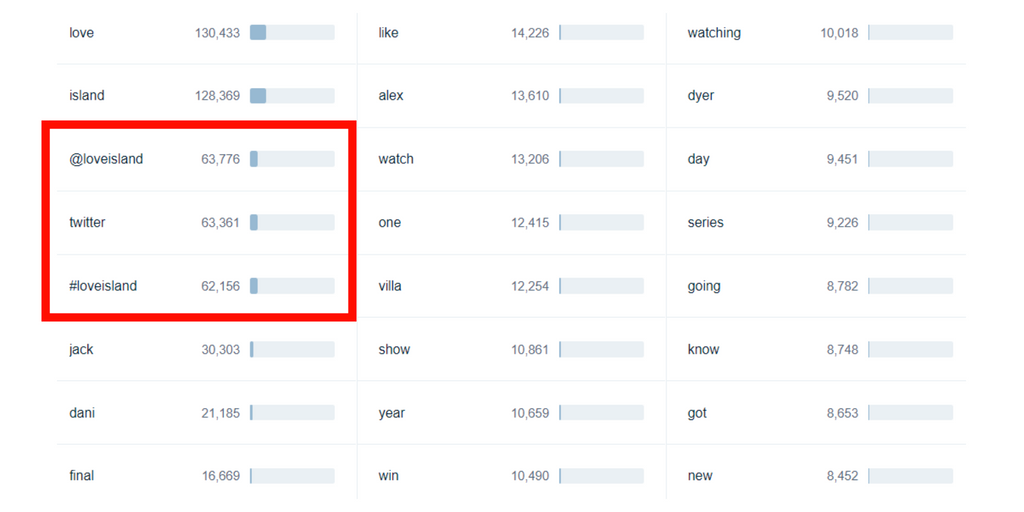
Love Island’s handle and official hashtag, complete with its own dedicated “hashflag” (an image that appears after a hashtag), has been included in approximately 26% of all online mentions. That’s a staggering amount of social traffic, which has undoubtedly contributed to the influence of its various social channels.
Thanks to its audience, the use of the Love Island hashtag has served as a medium for like-minded viewers to connect, in the hopes of getting their opinions on the show shared, liked, and retweeted – and even featured on Love Island’s social channels and popular third-party meme accounts like this one:
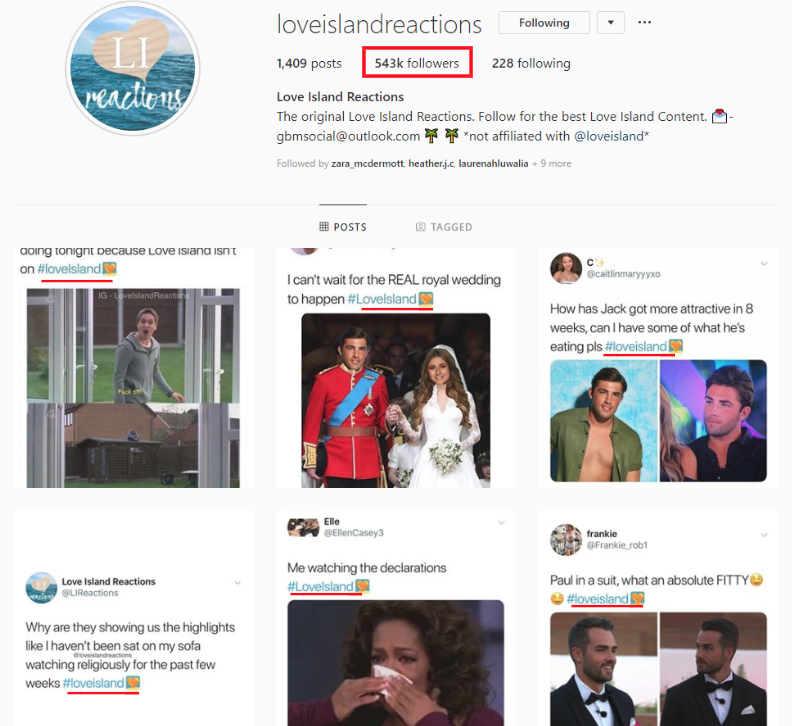
3. Love Island mentions increased by 55% between 6 pm and 12 am (on days with episodes)
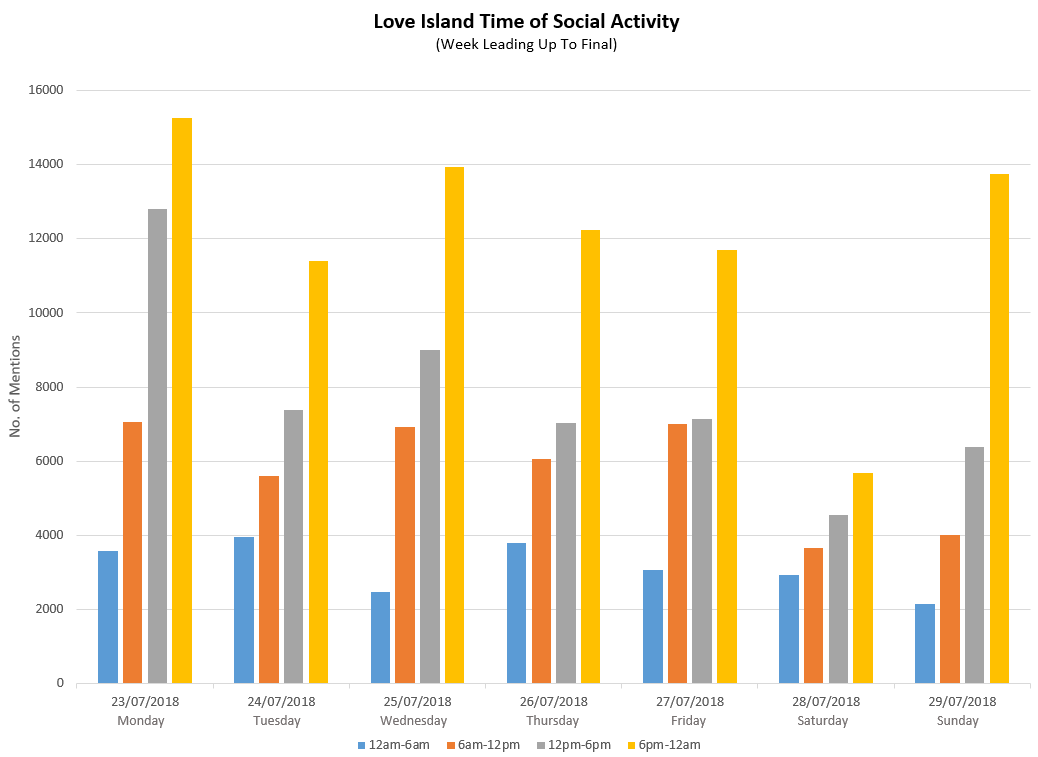
Naturally, with content built purely on snippets, clips, memes and video reels of the couples in the show, ITV ensures it’s at the forefront of the hype, posting as frequently as possible in the hours leading up to and after its daily episode debut (see 6 pm to 12 am mentions). This, in turn, sparked social conversations on a plethora of user-generated platforms e.g. news websites, fan twitter accounts, meme accounts, blogs, and more.
Positioning its social accounts as the go-to source for all up to date information about the show, it now sits at 2.1 million Instagram followers (doubling its following in the first month alone) and 876K Twitter followers.
Taking a look at this year’s season finale, mentions increased by a staggering 68%:
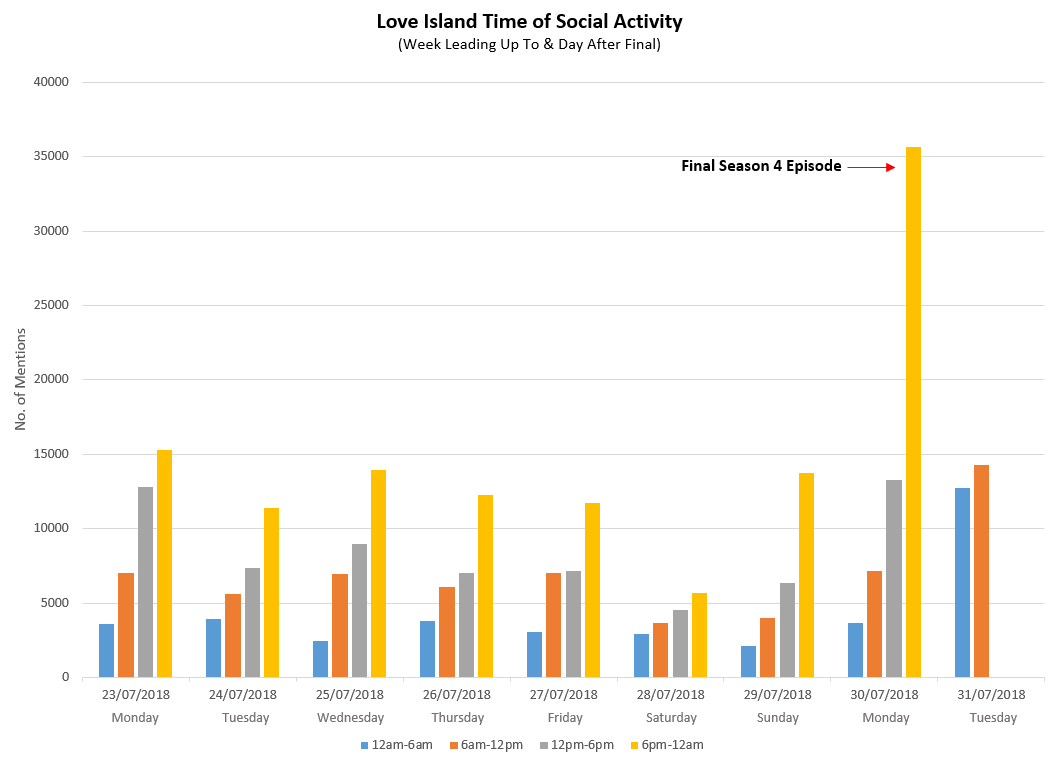
More specifically, Twitter engagements increased by 58%, Facebook by 132%, News by 80%, and Images by 206%:
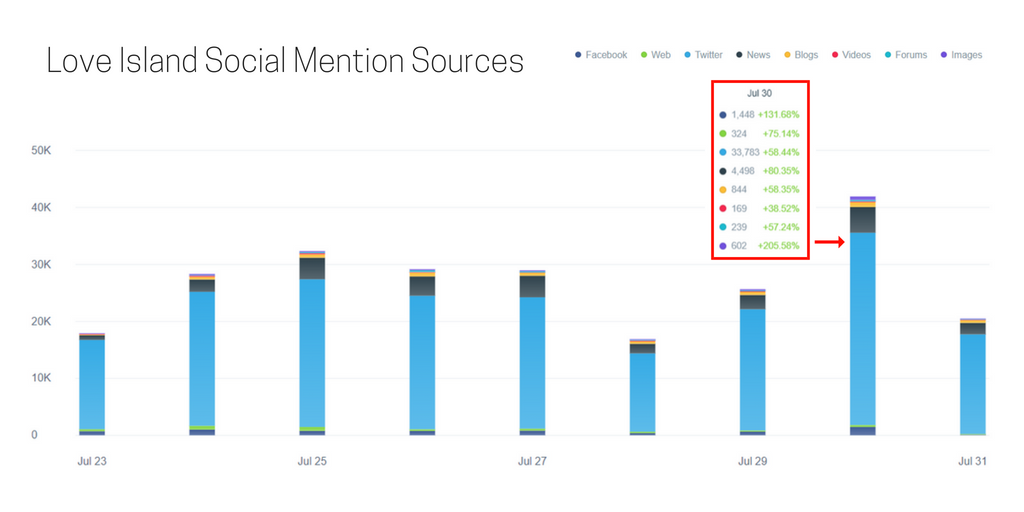
So – we’ve seen how well Love Island’s audience-centric content strategy paid off, but how exactly did they manage to deliver content compelling enough to keep their 16-34, female-oriented, UK audience engaged online for 2 full months?
Consistently shareable content
From first-look episode trailers to sound bite teasers – Love Island has radically defined the way we consume TV content online.
FIRST LOOK: It's been one EPIC summer of love, and the Islanders' final day in paradise has arrived! 😍 #LoveIsland pic.twitter.com/6UFb1DCu0H
— Love Island (@LoveIsland) July 30, 2018
Maintaining a consistent format and tone of voice (even range of emojis), decked with branding colours synonymous with summer, every post the show made was both predictable and surprising at the same time – making it visually recognisable for users to stay engaged whenever a Love Island post appeared on their feed.
Their use of Instagram stories and IGTV, in particular, allowed users to engage with quizzes, latest couple updates, cliff-hanger content and more.
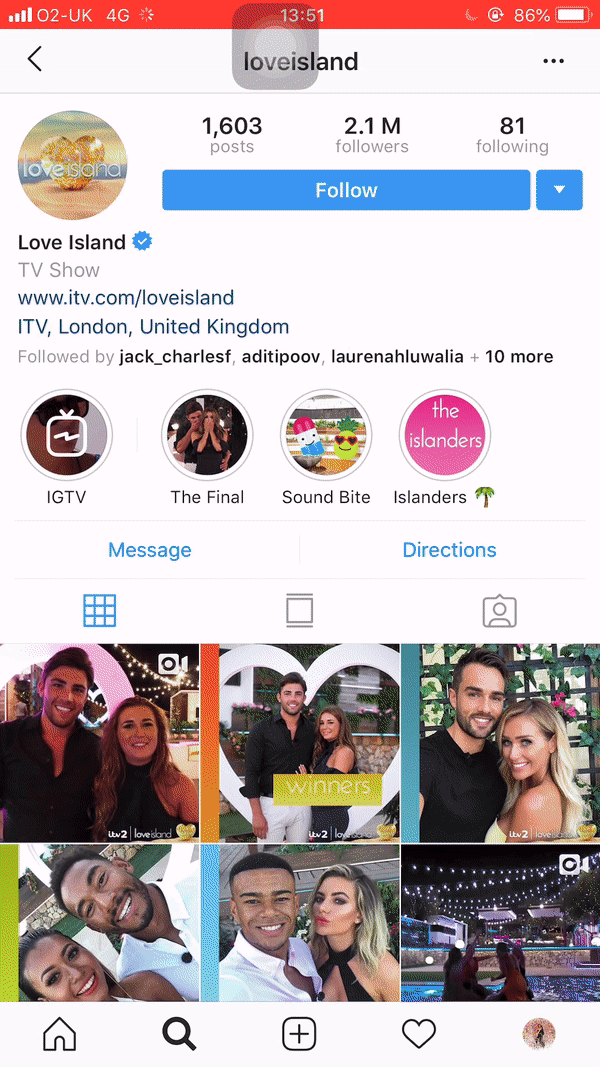
It’s this multi-channel approach that saw its video content enter 6-figure views, proving that the emergence of TV and social media played a key role in driving engagement to the live show.
Instant-influencers – the future of influencer marketing?
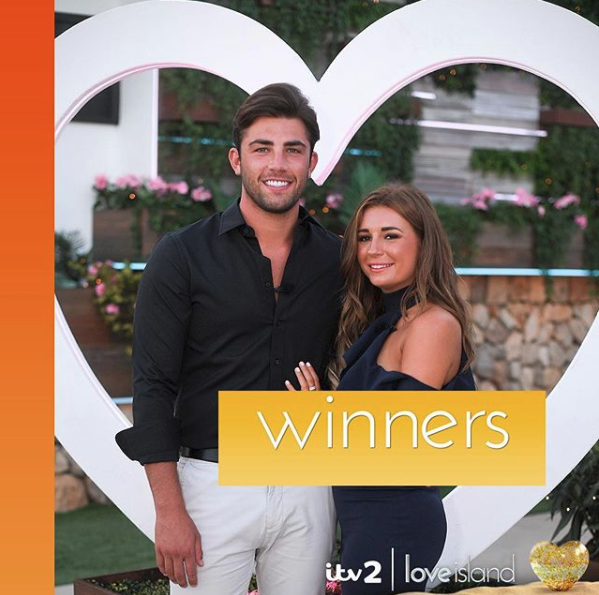
Winners Dani and Jack not only left the villa with love, friends for life, and £50,000 – but a combined 4.4 million Instagram followers. That’s more than Love Island’s total following.
The reality show is ultimately built on promoting personalities, and with 38 contestants having made their way into the villa this season – they were made the perfect brand ambassadors for when they returned back to support their fellow islanders from the UK.
The appeal to become an instant star has too racked up controversial debate after it was announced that more people applied to be on Love Island than to study at Oxford or Cambridge.
Whilst the stars got paid approximately £200 a week to appear on the show, the real dollar now lies in the consequent fashion, beauty and sport brand deals, modelling contacts, club appearances, and more – set to make some of this year’s islanders millionaires.
Here’s a look into how much some of this year’s Islanders are predicted to earn:
Dani Dyer – Fashion brand deal: £500,000, Celebrity Big Brother deal: £200,000, Instagram post: £5,000, Book deal: £50,000
Jack Fincham – Sport brand deal: £300,000-£500,000, Club Appearance: £5,000, Instagram post: £5,000, Book Deal: £50,000
Laura Anderson – Fashion brand deal: £150,000-£200,000, Instagram post:£2,000
Alex George – TV doctor deal: £1,000 – £2,000 per episode
The perfect commercial platform for advertisers
According to Enders Analysis, it was estimated that Love Island’s advertisers were paying between £30,000 and £50,000 for a slot in the latest season – and over £1m just to become a sponsor.
This series saw ITV secure more paid partnerships than ever before, but each one tactically chosen. Jet2Holidcays, Superdrug, Primark, Samsung, Lucozade Zero, and MissGuided were just some of the many brands whose content, products and even logo fonts were integrated into the commercial haven that was the villa.
Missguided, for example, has reported a 9000 per cent increase in sales driven by outfits worn by the Islanders. Sales for this crochet dress in particular increased by 9,300 per cent after Love Island winner Dani Dyer wore it on the show.
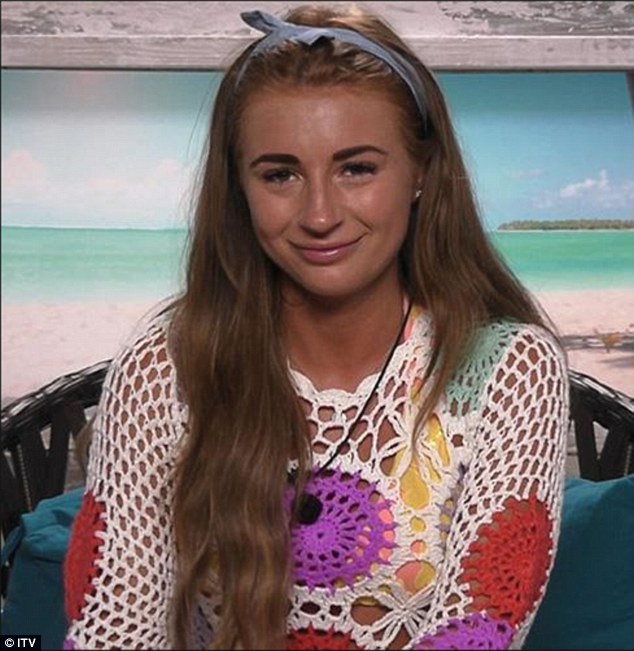
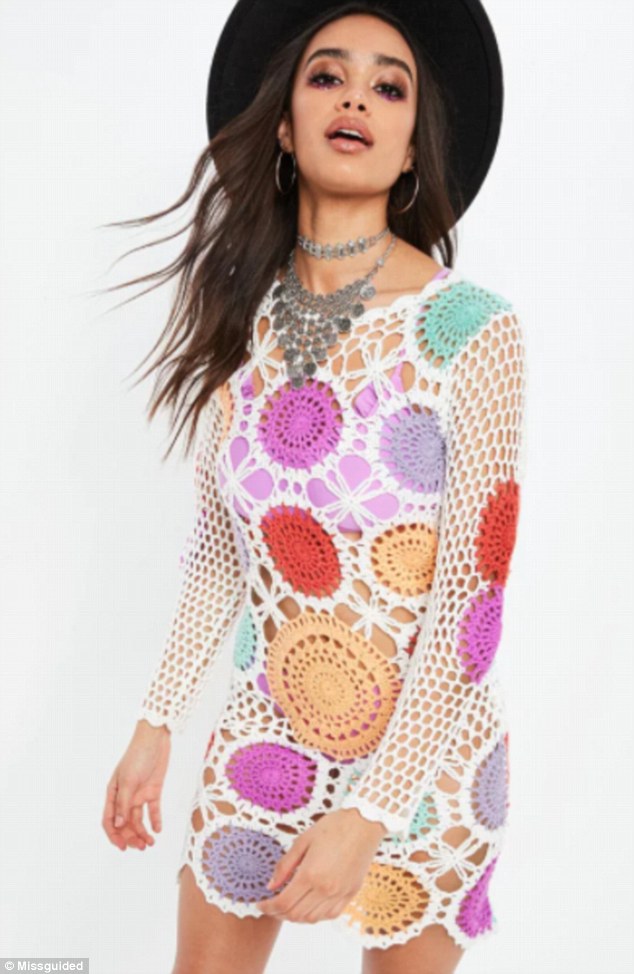
Another example Samsung, who sponsored the islander’s phones, also landed significant exposure every time a contestant received a text from the show’s producers.
Whilst the islanders were banned from mobile internet access, photo taking was encouraged which provided exposure for the brand across Love Island’s Instagram, even including custom Samsung border filters.
https://www.instagram.com/p/BlqwhVkgXbR/?taken-by=loveisland
The infamous Love Island water bottles, which sold over 260,000 this series was subtly printed in Superdrug’s brand font, proving yet another way brands were integrating into the villa, without viewers taking much notice.
By partnering with relevant brands, Love Island was able to do the opposite of what a paid brand sponsorship would normally feel like: forced and inauthentic.
The beauty of these above examples is how seamlessly natural their product messaging fit into the atmosphere of the villa, which in turn primed an audience into wanting to buy their products.
So, what has Love Island taught us? ITV has been able to create a platform that not only welcomes brands and influencers alike but a dedicated audience that thrives on its consistently surprising and engaging content.
Ultimately, the Love Island team have been able to successfully create a sense of community with its audience, from hilarious meme accounts to merchandise, making the show the most talked about show of the year.
It’s a glimpse into the future of TV in the digital age.
